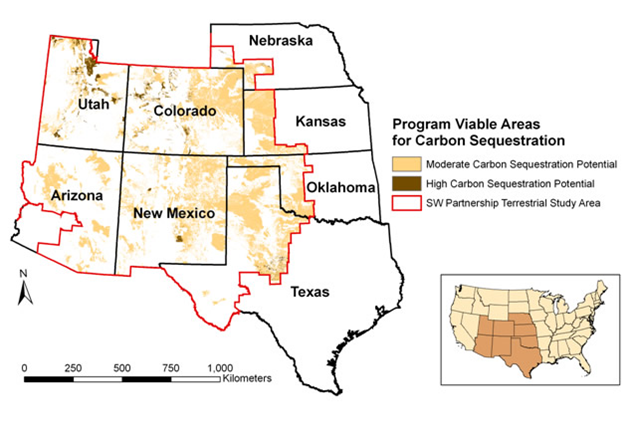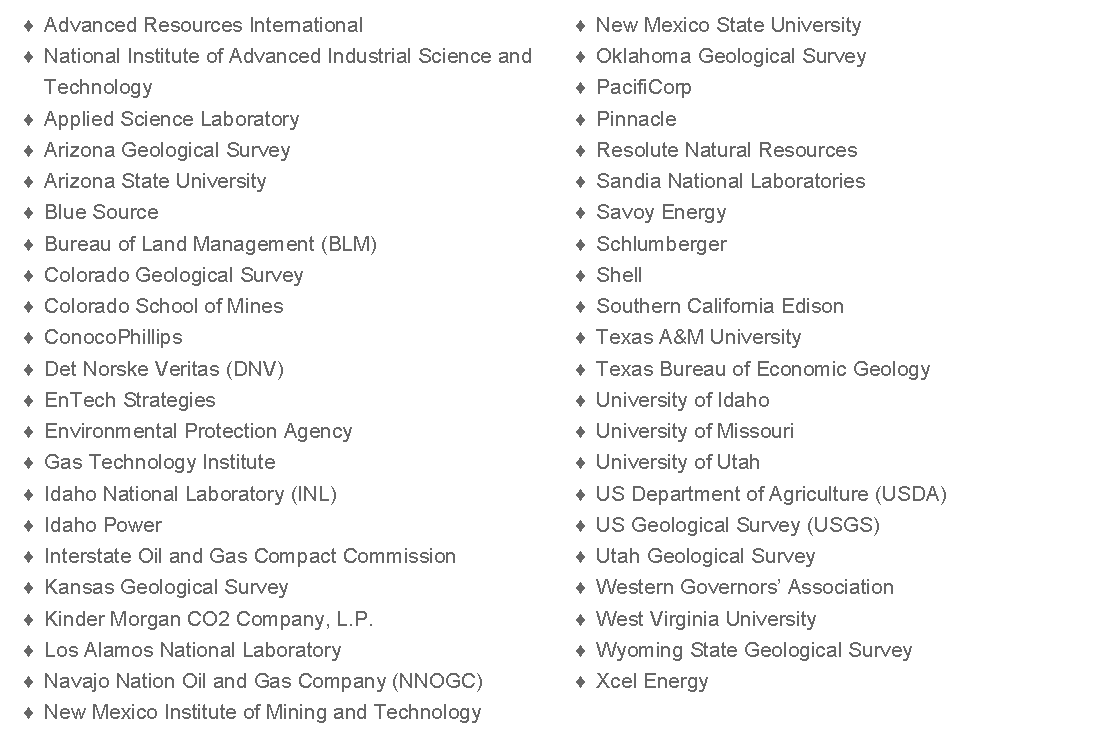Research / Other Projects / Southwestern Carbon Sequestration Partnership
In 2003, the Department of Energy’s National Energy Technology Laboratory formed 7 Regional Carbon Sequestration Partnerships to asses geologic formations suitable for carbon storage and to determine the best approaches to implement carbon sequestration in each region. Carbon sequestration is the capture and long-term storage of carbon dioxide in underground geological formations, soil, or vegetation to help mitigate carbon emissions. Partnerships cover 42 states and 4 Canadian provinces. Partnership memberships include energy companies, industry, farmers, foresters, state/local governments, regulatory agencies, electric utilities, national laboratories, universities/academic institutions, and civic groups. A diverse group of partners insures that all viewpoints are represented as research teams establish practical and environmentally sound strategies for each region.

Southwestern Partnership (SWP):
The Southwestern Partnership is charged with evaluating available technologies to capture and reduce emission intensity of greenhouse gases by increasing carbon storage in soils and vegetation through changes in land use and management. Federal conservation programs on private land are the dominant influence on land use and management in the southwest region. Government programs, such as the Conservation Reserve Program (CRP), encourage land conversion from cropland to perennial plant cover while other programs, such as Environmental Quality Incentives Program (EQIP) or Wildlife Habitat Incentives Program (WHIP), provide incentives for land managers to adopt conservation practices on cropland, rangeland, and forestland. It is through these changes in land management practices that the greatest increases in terrestrial carbon storage can occur.
SWP Objectives:
- Develop improved technologies and systems for direct measurements of soil and vegetation carbon at reference sites selected within Southwestern Partnership
- Develop remote sensing and classification protocols to improve mesoscale soil and vegetation carbon estimates
- Construct ecological process models that reflect soil and vegetation changes resulting from current land use and land use associated with implementation of programs to sequester carbon or reduce carbon losses
- Develop a regional inventory and decision support tool

Potential Impacts:
By accomplishing these objectives, SWP can develop an interactive decision support tool to determine the best management approach to modify soil carbon levels and identify common conservation practices that could increase soil carbon. Management actions could include converting cropland to rangeland, restoring degraded rangeland, or improving the management on existing rangeland. This will be useful to land managers at site-specific scales to allow them to make cost-effective decisions compatible with other land use and management objectives. In addition, marketing carbon storage has the potential for increasing total ranch-level income.
Southwestern Partnership Member Organizations:

